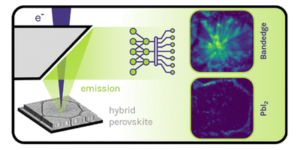Read the collection in Nanoscale Advances
We are delighted to introduce our new themed collection titled Nanoclusters – From Theory to Application!
Guest Edited by Yi Gao (Shanghai Advanced Research Institute, Chinese Academy of Sciences, China), Daojian Cheng (Beijing University of Chemical Technology, China) and Zhigang Wang (Jilin University, China).
This themed collection in Nanoscale Advances focuses on nanoparticles with unique and tuneable properties depending on their sizes, structures, and compositions.
A small selection of the papers are featured below, all open access.
Characterizing polyproline II conformational change of collagen superhelix unit on adsorption on gold surface
Yuntao Li, Jinrong Yang and Xiao He
Nanoscale Adv., 2023, 5, 5322-5331. DOI: 10.1039/D3NA00185G
Infrared spectroscopic study of solvation and size effects on reactions between water molecules and neutral rare-earth metals
Tiantong Wang, Shangdong Li, Wenhui Yan, Shuai Jiang, Hua Xie, Gang Li and Ling Jiang
Nanoscale Adv., 2023, 5, 6626-6634. DOI: 10.1039/D3NA00873H
Modeling size and edge functionalization of MXene-based quantum dots and their effect on electronic and magnetic properties
Barbora Vénosová and František Karlický
Nanoscale Adv., 2023, 5, 7067-7076. DOI: 10.1039/D3NA00474K
We hope you enjoy reading this themed collection!
Did you know?
At Nanoscale Advances, our themed collections are built by collaboration between our Guest Editors and expert Associate Editors. Our Guest Editors guide the scope and curate the contributions in our collections but all submissions are handled through peer review by our team of resident Associate Editors. This means that as an author you receive a consistent experience, and as a reader you can trust the quality of the science being presented.
If you have an idea for a topical collection in your research field, we’d love to hear from you! Get in touch here.





































